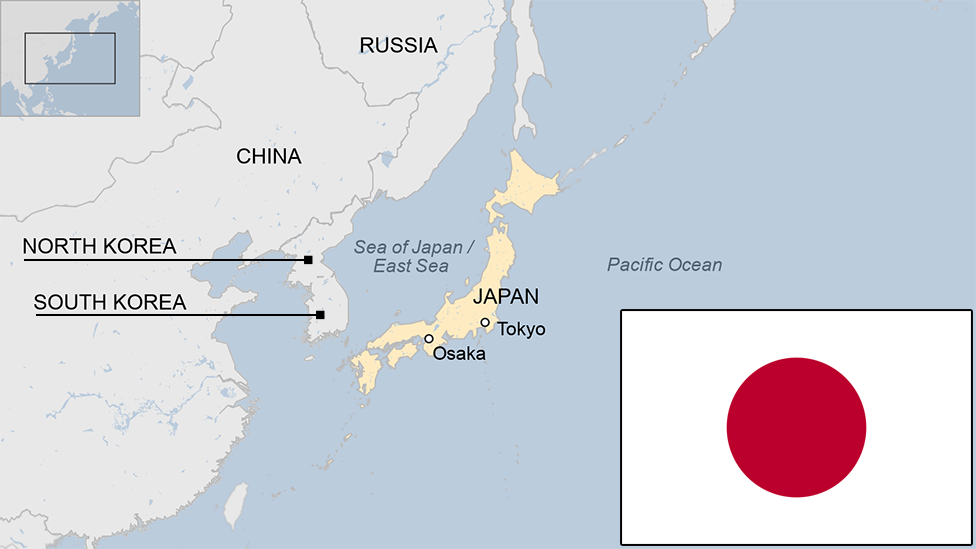Tokyo Olympic stadium: Sports cathedral or white elephant?
- Published
Is Japan's 2020 stadium too big? Rupert Wingfield-Hayes explains in 60 seconds
Olympic stadiums are a problem.
In Athens, many of the 2004 stadia now stand abandoned and overgrown. Beijing's hugely expensive 2008 "Bird's Nest" may have become a tourist attraction, but has been rarely used for anything else.
Even London's "cheap" 2012 stadium is having a troubled and expensive rebirth as a football arena.
So what lessons has Tokyo taken away from all this? Huge and expensive state-of-the-art stadiums are a bad idea? Apparently not.
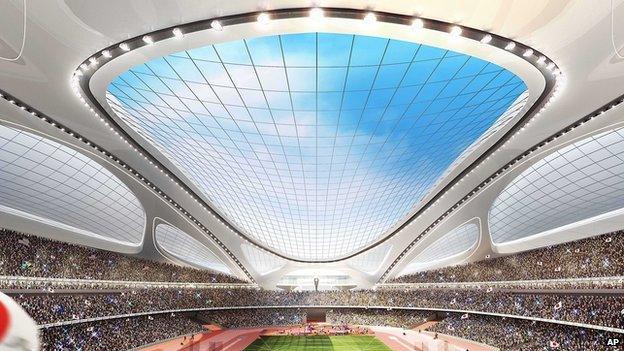
This artist's impression shows how Tokyo's new National Stadium will look
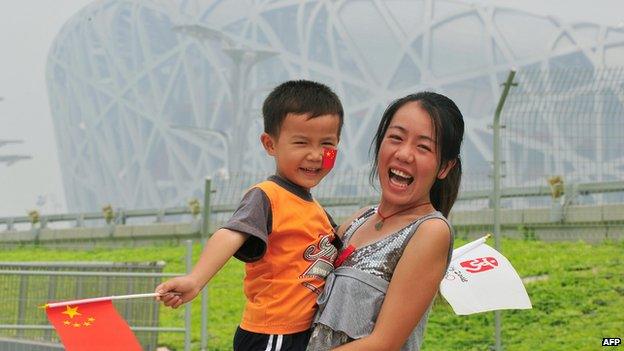
In Beijing, the Bird's Nest is a tourist attraction but little used for sport
'Ridiculous'
Tokyo's 2020 Olympic stadium will be bigger and more expensive than any of its recent predecessors.
Renowned British architect Zaha Hadid has designed it. Some have likened it to a spaceship, others to a giant bicycle helmet.
The initial budget was $3bn (£1.8bn). That has since been scaled back to "just" $1.7bn. The arching roof will rise 70m (230ft) into the air. The original design would have been three times bigger than London's Olympic stadium. The revised design is now only twice as big.
This has got some of Tokyo's more illustrious denizens up in arms. Primary among them is Fumihiko Maki, one of Japan's best-known architects who also designed the Tokyo gymnasium for the 1964 Olympics.
"I'm saying it's just ridiculous," he said. "We are raising our voices, but they don't listen."
It is hard to imagine this gentle, softly spoken 86-year-old getting angry, but it appears he has.
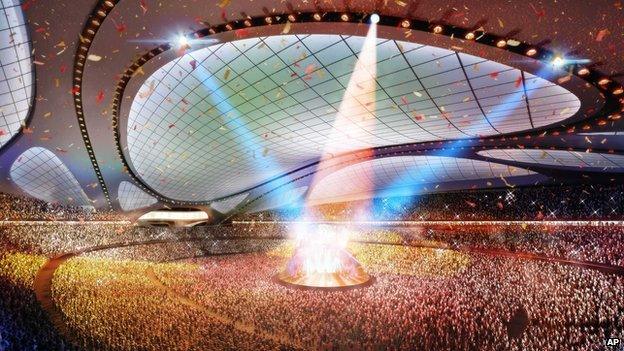
There are plans for the stadium to hold concerts once the 2020 Olympic Games are over
Professor Maki's main issue with the stadium is its huge retractable roof.
"My biggest objection is to cover the stadium," he said. "Technically it's more difficult and costly. This kind of system is not ideal for sports. All sports people would be against having a covered field.
"If you make an open stadium then later you could reduce the size to 60,000 as you have done in London. By building a covered stadium for 80,000 you can't change it."
The reason Tokyo is building such a complex retractable roof is so the stadium can be used for concerts after the Olympics is over.
Without a roof, the noise of rock and pop concerts would break Tokyo's tight noise restrictions, especially in the middle of a residential neighbourhood.
That brings us to the second big problem: location.
Green importance
Tokyo, rightly, has a reputation for being a huge sprawling mess, with little in the way of town-planning or green spaces. The ones that it does have are therefore precious.
The new stadium is being built smack in the middle of one of the greenest, most historic parts of the city - Meiji Jingu Gaien, whose name means "The outer garden of the Meiji Shrine". The Emperor Meiji is revered in Japan as the man who dragged the isolated backward country in the modern world.
"When the Emperor Meiji passed away in 1912, people from all over Japan donated money to buy this land," said Nobuko Shimizu, a member of a group called "The Custodians of the National Stadium" that has been campaigning to stop the old stadium from being demolished.
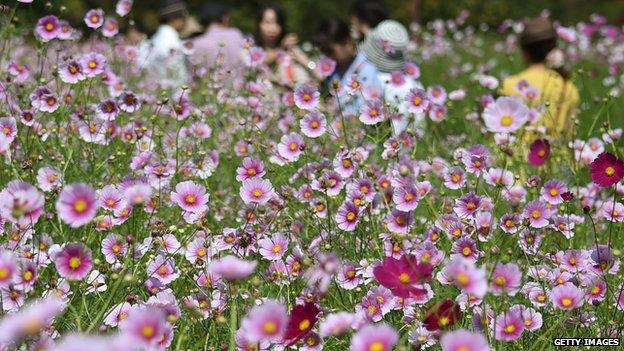
Green spaces are precious on Tokyo's urban city landscape
"The Emperor Meiji loved sports. So they built a gymnasium and a baseball field and an art gallery to celebrate his accomplishments."
"This place is a kind of oasis," she added, pointing to nearby Ginko trees.
"We can walk and chat and hold picnics here. If the new stadium is built, we would lose those parks and greens. It is not acceptable."
The exasperation in her voice is clear. Hundreds of her group took to the streets to protest this summer, and more than 13,000 people signed a petition against the new stadium.
But the Japanese Sports Council remains unmoved.
"I don't think there is a chance it will be changed," said Yoshitaka Takasaki of the Japan Sports Council.
"We have notified architects from around the world about the design competition. Forty-six designs were entered, and Zaha Hadid's design was selected. We followed a proper process. We have a responsibility to build a new stadium based on her design."
'Bureaucratic arrogance'
Professor Maki remains unimpressed by such arguments.
He has accused the sports council of bureaucratic arrogance and leading Tokyo down the same road that Beijing took in 2008.
"Somebody at the decision-making level wants to do it again, just like in the case of China," he said.
"They want to show off shining technology so that people will marvel at it. It is exactly the same mentality in our government."
"We have a very modernised country but we still have a bureaucracy that governs everything," the designer of the 1964 gymnasium added. "We are not a civil society where citizen voices can be critical."
- Published9 September 2013
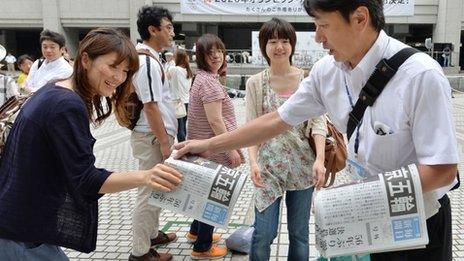
- Published29 October 2024
